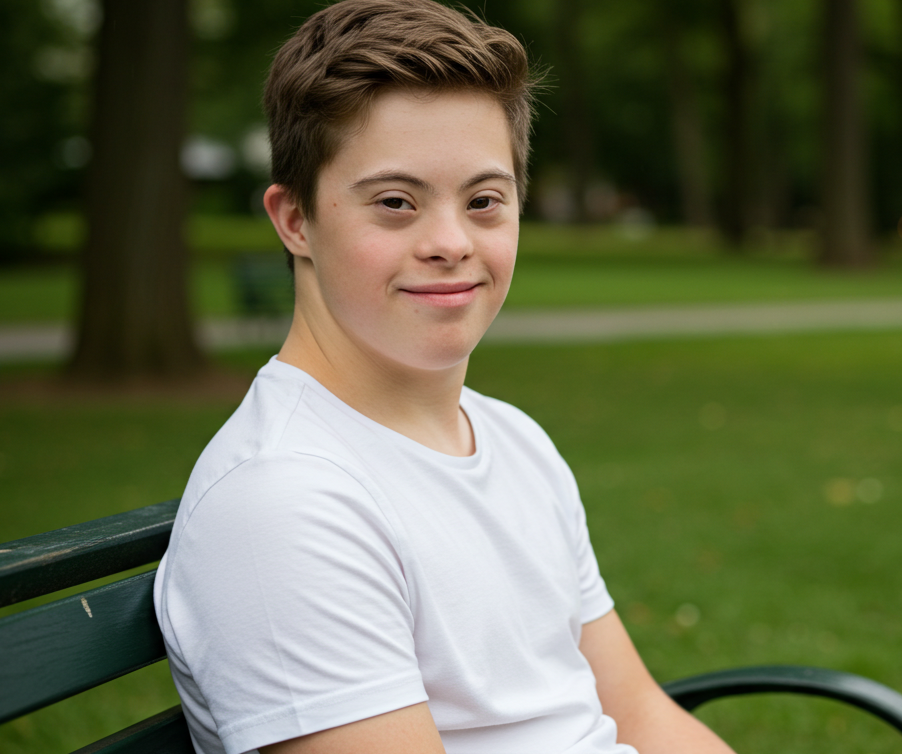Understanding the Causes of Down Syndrome:
Genetics, Risk Factors & More

Learning that your child may have Down syndrome can stir a wide range of emotions—from uncertainty and fear to the desire for answers and clarity. One of the first questions many parents ask is: What are the causes of Down syndrome? Understanding the underlying causes of this chromosomal condition can not only offer peace of mind but also help in planning the right care, support, and expectations for the journey ahead.
Down syndrome is a genetic disorder that occurs when there is an extra copy—either partial or full—of chromosome 21. This additional genetic material alters the course of development and results in the distinct physical and cognitive traits associated with the condition. The causes of Down syndrome can be divided into three genetic types: Trisomy 21, Mosaicism, and Translocation. Each has unique origins and implications, though all share one common feature: an abnormal presence of extra chromosome 21 material.
Genetic Causes of Down Syndrome
1. Trisomy 21 (Non-disjunction)
Trisomy 21 is by far the most common cause of Down syndrome, accounting for about 95% of all cases. It occurs when a sperm or egg cell fails to divide properly during the formation of reproductive cells. As a result, the embryo ends up with three copies of chromosome 21 in all of its cells instead of the usual two.
This type of Down syndrome affects every cell in the body, which is why individuals with Trisomy 21 often display a broad range of classic physical and developmental symptoms. Non-disjunction is considered a random event and is not typically inherited, although advanced maternal age is a known risk factor.
2. Mosaicism (Mosaic Down Syndrome)
Mosaicism is a rarer form of Down syndrome, found in about 1–2% of cases. In this scenario, the error in cell division happens after fertilization, so only some of the body's cells carry the extra chromosome 21. The rest of the cells have the typical number of chromosomes.
Children with mosaic Down syndrome may have fewer or milder symptoms than those with Trisomy 21, depending on how many and which types of cells are affected. This form can be harder to detect and often requires specialized genetic testing to confirm.
3. Translocation
Translocation Down syndrome is found in about 3–4% of cases. Unlike Trisomy 21, this condition happens when a portion of chromosome 21 breaks off during cell division and attaches to another chromosome, often chromosome 14. Although the person still has two copies of chromosome 21, they also have extra material from chromosome 21, which causes the characteristics of Down syndrome.
Translocation can be inherited. In about one-third of these cases, one of the parents is a balanced carrier, meaning they have the rearranged chromosome but no symptoms themselves. If a parent is a carrier, the chance of passing it on varies: approximately 10–15% if the mother is the carrier, and around 3% if the father is the carrier.
It is important to note that when considering first trimester screenings—which typically include a combination of ultrasound and maternal blood tests—Down Syndrome statistics show they have about a 5% false positive rate.
What Doesn’t Cause Down Syndrome?
Parents often wrestle with guilt or confusion after a Down syndrome diagnosis, wondering if their actions before or during pregnancy could be to blame. The truth is, in the vast majority of cases, the condition is not caused by anything a parent did or didn’t do. There is no scientific evidence linking Down syndrome to lifestyle, environmental exposure, or dietary factors before conception or during pregnancy.
That said, maternal age is a statistically significant factor. Women over 35 are more likely to have a child with Down syndrome due to increased chances of non-disjunction. However, because younger women tend to have more children overall, most babies with Down syndrome are born to mothers under 35.
Risk Factors and Likelihood
Although most cases are random, several known risk factors may increase the likelihood of having a baby with Down syndrome:

- Advanced maternal age (35 or older)
- Having had a previous child with Down syndrome
- Being a carrier of a genetic translocation
- Certain genetic predispositions (though not always identified)
Genetic counseling and prenatal screening are available for parents who want more information about their specific risk.
Emerging Ideas: Nutrition as a Complementary Treatment
Some families have explored nutritional interventions as a way to support development and reduce the impact of symptoms. While not yet widely endorsed by the medical community, certain vitamins, antioxidants, and targeted supplements have shown promise in early research and anecdotal reports. These strategies should always be discussed with a pediatrician or specialist to ensure safety and effectiveness.
Final Thoughts
The causes of Down syndrome are rooted in genetics, and most cases happen by chance. Understanding the three main types—Trisomy 21, Mosaicism, and Translocation—can provide clarity and help parents make informed decisions. While a diagnosis may feel overwhelming at first, the journey ahead is one filled with growth, strength, and community support. With the right therapies, educational resources, and medical care, children with Down syndrome can thrive and lead fulfilling lives.
If you’re navigating this diagnosis, know that you’re not alone. Resources, professionals, and other families are here to support you every step of the way.
Additional Resources:
If you haven't already, be sure to check out my ebooks, now on Amazon!
References
1. Mayo Clinic Staff. (2009). Down Syndrome: Causes. www.mayoclinic.com. 10-11-10.
2. National Down Syndrome Society. What causes down syndrome?. www.ndss.org. 3-21-11.

